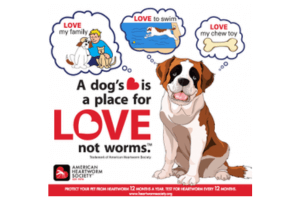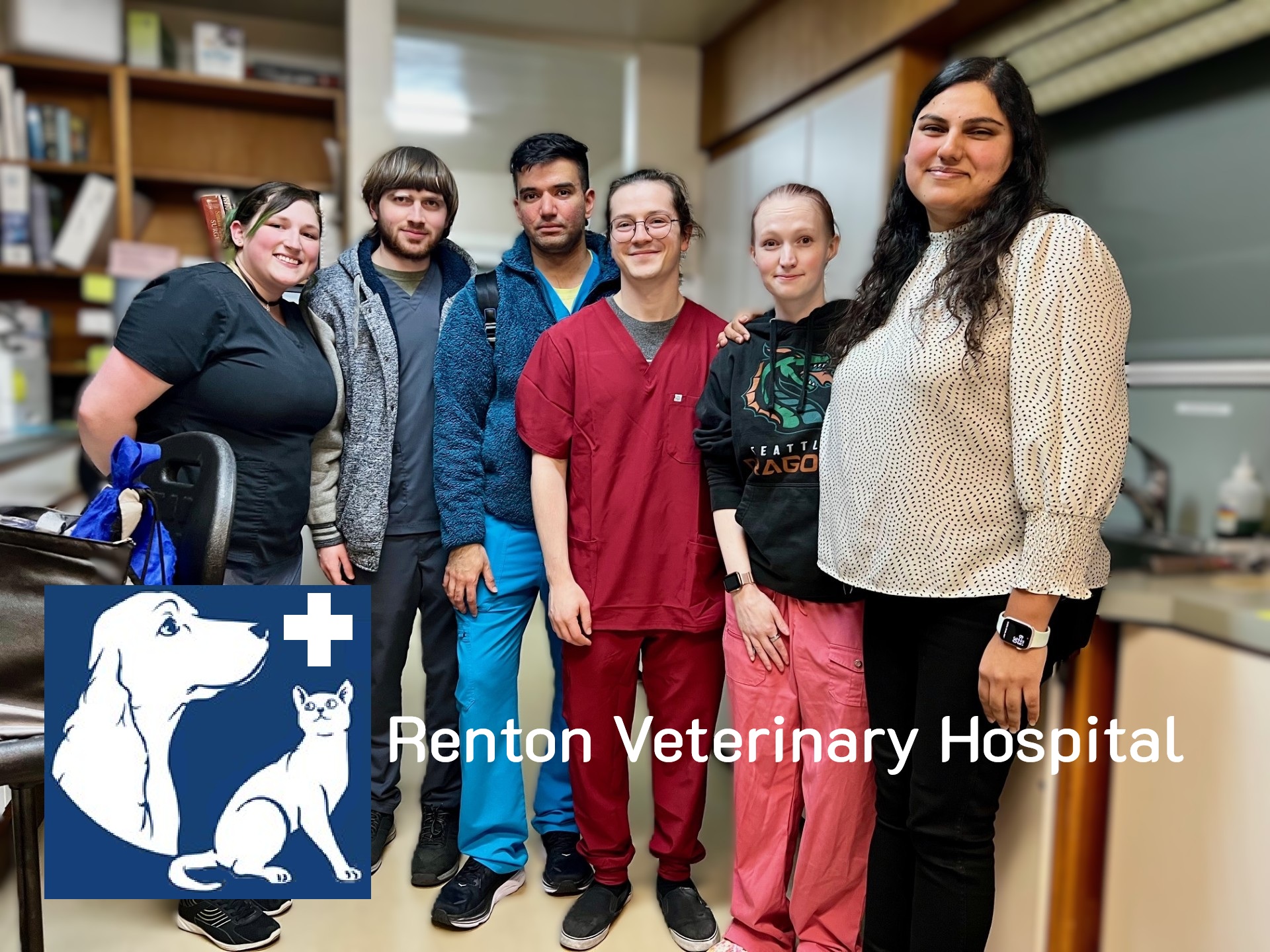Veterinary Services
Pet Health

HOW CAN I PROTECT MY PET
AGAINST HEARTWORMS?
We recently saw a case of heartworm in our Renton Veterinary Hospital. Heartworm disease is a severe and life-threatening condition affecting dogs and, to a lesser extent, cats. Mosquitoes spread the disease by injecting the parasite into your pet at the time of the bite.
Clinical symptoms of heartworm disease develop very slowly. Lack of energy and exercise intolerance are early symptoms, as are coughing and difficulty breathing. Because heartworm disease is increasing in frequency and is a serious and deadly disease, we recommend your pet be tested annually.
Heartworms are parasitic roundworms that can be transmitted to your pet via mosquito bites. Your pet should be tested by your vet every six months to check for heartworms contracted during the previous season, as early detection is the key to properly treating your pet.
Though the risk of mosquito bites is typically heightened during the spring and summer months in Renton, WA, protecting your pets from these pests year-round is essential. According to the American Heartworm Society, heartworms are diagnosed throughout the year, and the mosquitoes that carry the parasites can proliferate even when the weather is cold.
More About Heartworm Disease
Heartworm Prevention
Heartworm disease prevention is simple and effective. For dogs, a once-a-month heartworm preventative can be given as a tasty, chewable treat. This same chewable medicine prevents not only heartworms from developing but also kills and prevents most other types of worms that can infect your dog. Cats are protected by applying a drop of heartworm prevention liquid to the skin once a month. We recommend this to prevent heartworm disease as well as fleas, ear mites, and other types of worms that can infect your cat.
HEARTWORM TREATMENT
The corrective measure is more expansive and risky than taking preventative steps, and it can prove to be lengthy, lasting several months. It can also be painful, and the parasite’s die-off can cause inflammation and complications. It can require your pet to forgo most of their exercise for one to three months, and for one million dogs each year in the United States, heartworm treatment will be a necessity.
Heartworms generally require six or seven months to grow to maturity, at which point they can be detected by a heartworm test. Once the larva makes it to the juvenile adult stage, it will migrate to the heart, and this usually will occur within 90 days from the time the organism enters the host. These parasites will continue to live in a dog’s heart for five to seven years or until they die. Heartworms can continue to grow, and female heartworms will pass their microfilaria into the dog’s bloodstream, enabling more worms to grow. Female worms can grow up to 14 inches in length, though the male worms are typically shorter.
It is vital to rid your yard of the stagnant water found in flower pots, gutter spouts, and empty containers to prevent the spread of mosquitoes. You can also use a pet-friendly insecticide outdoors for further protection, and you can administer oral medicines to your pet daily to prevent heartworms. It is important to remember that indoor dogs are not immune to getting heartworms and that they need protection just as an outdoor dog will.
If you would like to have your pet tested for heartworm disease, or if you would like additional information on how best to protect your pet from this dangerous parasite, please contact Renton Veterinary Hospital! You are welcome to ask any questions about your pets’ health or the prevention of heartworm. Our friendly staff can help you, and we look forward to serving you and your pet.
WHELPING
Post Whelping Chores
There are two common killers of newborn puppies: Lack of heat and lack of groceries! If you find puppies restless, sucking at everything they can for long time periods, crying or fussing all the time, cold to the touch or lethargic, or rejected by the dam, you must make sure these two things are fulfilled.
Place a thermometer rectally; it should be close to 97 F, no cooler. Puppies should be warmed to close to 100F if failing for any reason and kept there for the first week. Healthy pups at 97F to 100F can be normal the first week and left normally. Once body temperature is taken care of, you must be certain that weight gain is occurring.
WEIGH THE PUPPIES ACCURATELY and in large litters, identify the puppies with a marking system that the bitch can’t lick off. Check the mother’s nipples and breast for milk. If it’s not adequate to satisfy complaining puppies or registering a weight gain, you must supplement. Their little bellies should be full-looking. Supplements and bottles can be purchased in good pet shops.
- Determine the happiness of each pup hourly. The first eighteen hours are the most critical.
- Weigh the pups often the first few days, especially.
- Determine slower puppies’ rectal temperatures often.
- Leave the dam alone to work. If you interfere too much, it’s counterproductive.
- Check the dam’s mammary glands daily for signs of mastitis. They should be soft.
- Puppies need to be stimulated to urinate and defecate. If the mother is not, do so.
- Check the pups for congenital defects, cleft pallets, abnormal extremities, etc.
THE WHELPING PERIOD (LABOR)
Most bitches will whelp alone and without assistance, needing only your supervision to ensure everything is going well. If you bother the bitch too much or interfere, you will make her nervous. Be ready to help her or seek help when labor begins if any abnormalities should develop. When in labor, you will see her begin to undergo contractions; she may lie on her side and strain or stand in a “urination stance” (squatting as if to urinate) as she strains.
Learn More
SIGNS OF ONCOMING LABOR
There may be a pre-labor period of 8 to 24 hours in duration. The following signs may be seen during the pre-labor period, indicating the approaching whelping.
Learn More
PREPARATION FOR WHELPING
The place where the bitch (mother dog) is to whelp should be prepared a week or so in advance, allowing her to sleep there at night and rest there during the day so that she will be well accustomed to the strange surroundings when the time comes for her to whelp. Many places may be used for whelping. It should be away from any activity, noise, and other pets. Think of ease of cleaning (no carpets) and access to the outside for larger breeds.
Learn More


